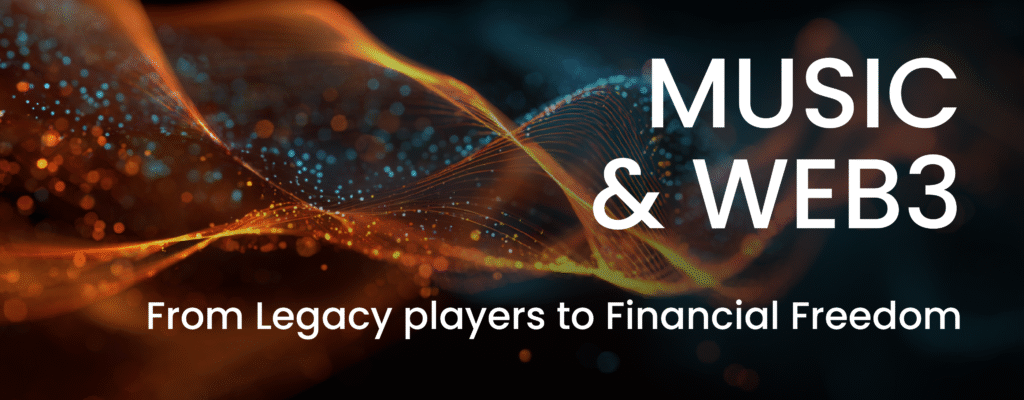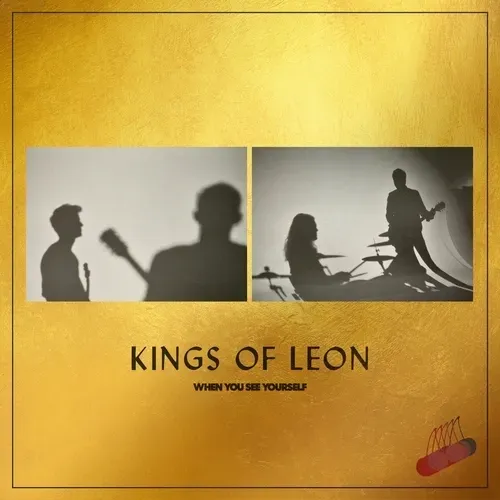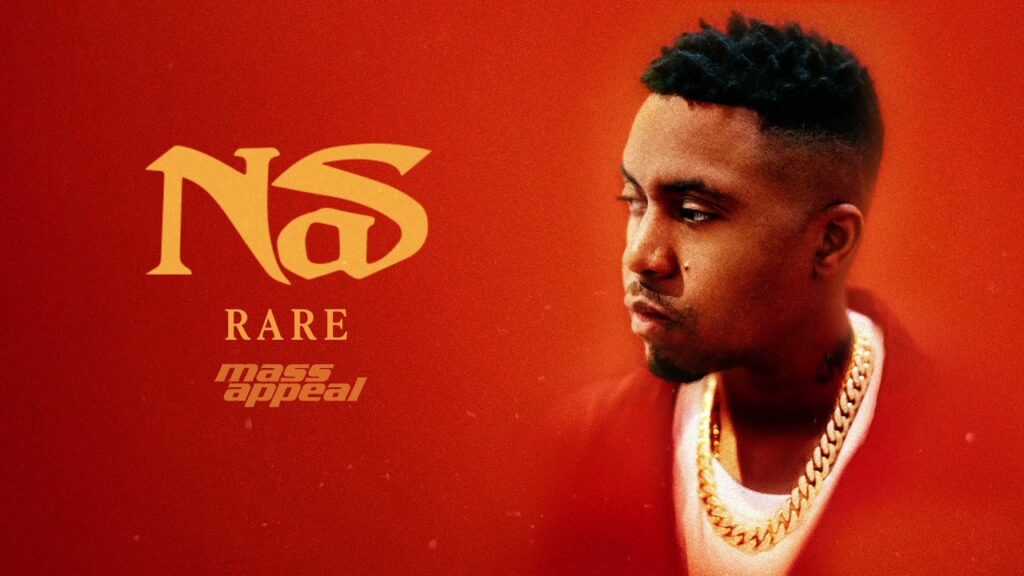
1) What’s really changing in music right now
The Web3 music industry isn’t a flashy revolution — it’s a quiet shift of power back to artists. A slow shift of power back to the people who make the art.
For years, musicians have worked inside centralized systems: opaque data, delayed payouts, a stream-count treadmill. Web3 doesn’t fix everything, but it rebuilds what matters: ownership you can prove, payments you can automate, and relationships you can actually nurture.
This isn’t about replacing Spotify. It’s a layer on top — one that turns your most loyal 5% of listeners into a sustainable business: limited editions that unlock access, smart contracts that split instantly, and fan data you control (ethically).
Why now: fewer middlemen, better margins, clearer signals from the people who care.
Ownership is the start; relationship is the destination.
2) The economic problem the Web3 music industry aims to solve
Let’s be honest about where the friction really lies:
- Opaque data. Platforms know your audience; you don’t. Re-engagement becomes guesswork.
- Slow, diluted money. Royalties snake through layers and fees before they reach you.
- Commoditized attention. Streaming optimizes for volume, not depth. Super-fans are under-monetized.
How the Web3 music industry reframes ownership and access
Web3 doesn’t promise miracles, but it reframes what matters:
transactions, access, and splits become programmable — fair, transparent, and traceable.
- Direct sales and access. Limited editions that unlock real perks and consent-based contact.
- Automated splits. Collaborators paid instantly. No chasing, no spreadsheets.
- Verifiable provenance. Every sale, ticket, or licence leaves a trace you can audit.
You don’t need every listener on-chain. You need the right listeners — the ones who care enough to belong.
Depth beats reach when depth is measurable
3) The tools powering the Web3 music industry’s next chapter
The tech isn’t the headline — it’s the infrastructure.
Behind every buzzword is one simple promise: make music flow with fewer bottlenecks and more trust.
3.1 Smart contracts — the backbone of the Web3 music industry
Set the rules once, and payments take care of themselves.
Producers, singers, designers — everyone gets paid the moment a sale happens.
Think of it as a silent accountant that never forgets a split or delays a payout.
Still, clarity beats cleverness: write plain-English terms, keep off-chain records, and stay compliant if tokens touch real investment territory (KYC/AML, securities).
It’s not code; it’s trust that runs on time.
3.2 Editions & collectibles — utility > hype
Forget “NFTs.”
Think of them as editions — digital vinyl that carries a story, a reward, or a doorway.
Maybe it’s early access, stems, a Q&A, or a piece of signed merch.
Price them fairly, cap the supply, and deliver fast.
Plan your P&L on real-world value (utility + primary sales); treat royalties on resales as a nice surprise, not a guarantee.
Good practice?
A clear utility list, fair pricing, and re-engagement touchpoints at Day 7, 30 and 90.
Fans don’t buy tokens — they buy belonging.
3.3 Token-gated communities & DAOs — participation, not politics
Think of access as a circle, not a hierarchy.
Give holders a real way to take part — from artwork polls to remix votes or behind-the-scenes decisions.
Keep it light, human, and fun. The goal isn’t bureaucracy; it’s co-creation.
Community works when decisions fit the room.
3.4 Decentralised identity & storage — own the link, not just the file
Wallet sign-ins and consent-based emails mean fans can follow you across platforms without losing touch.
Store your masters and artwork on reliable, IPFS-backed systems — and always mirror legal backups offline.
Transparency is protection: map where your data flows, follow privacy law (GDPR/DSR), and respect consent as much as you value ownership.
Own the relationship, respect the consent.
4) Real-world use cases and early success stories from the Web3 music industry
4.1 Kings of Leon — the first major NFT album
In 2021, When You See Yourself marked the first time a major band treated digital ownership as an experience, not a gimmick.
Each collector received a limited digital album, exclusive vinyl, and lifetime concert perks — earning the band roughly $2 million.
This wasn’t about tech hype. It was about translating the scarcity and ritual of vinyl into a digital language fans could understand.
It showed that the real value of Web3 isn’t speculation — it’s connection.
When you pair object + access + story, fans don’t buy the file, they buy the belonging.
4.2 Daniel Allan — crowdfunding before it was cool
Long before majors cared about Web3, producer Daniel Allan asked his fans a simple question:
“If you could help me finish this EP, would you?”
Through a governance-style crowdfund on Mirror, he raised ≈ 50 ETH (~ $120 000) to create Overstimulated, sharing ownership stakes and creative decisions with his supporters.
The campaign let him keep ≈ 85 % of earnings and full creative control.
This wasn’t just fundraising — it was co-creation. Fans became early partners, emotionally and financially invested in the outcome.
Each supporter wasn’t buying into hype, but into a shared timeline — an unfolding story they helped write.
Every project is a pact — define the utility, the timeline, and the follow-up before the mint.
Explore the full Overstimulated crowdfunding campaign on Mirror
People don’t fund projects — they fund belief.
4.3 Nas & 3LAU — turning royalties into community equity
On Royal.io, fans bought fractional royalty rights. $560k for Nas, $16M for 3LAU.
In Nas’s drop “Rare”, hundreds of listeners didn’t just stream a track — they owned a piece of it.
That moment quietly reframed what “supporting an artist” really means: participation > patronage.
Powerful model — but compliance comes first (KYC / AML / securities).
4.4 Black Dave — revenue sharing as relationship
Rapper Black Dave flipped the script by giving 30 % of his NFT revenues to 154 collectors — turning casual listeners into long-term collaborators.
His Mirror campaign did more than share profit; it shared authorship.
When the upside is mutual and traceable, loyalty stops being a slogan and becomes infrastructure.
In Web3, fairness is the new fandom.
4.5 Independent platforms — the quiet ecosystem
Platforms like Sound.xyz, Catalog, NEWM.io let independent artists mint, sell and distribute directly and are quietly redefining what the Web3 music industry can look like in practice.
Every sale is verifiable, splits are automatic, engagement measurable.
Streaming still brings reach — Web3 brings receipts.
Takeaway: streaming gives reach; Web3 gives receipts.
Proof beats promise.
5) Fan ownership and community — the real growth engine of the Web3 music industry
In Web2, a listener is a metric.
In Web3, a fan is a participant.
5.1 From passive listeners to active stakeholders
One superfan who spends $60 on a limited edition, joins two calls, and votes on a remix is worth more — emotionally and financially — than 10,000 anonymous streams.
Multiply that by 1,000 engaged fans and you’re looking at $60,000 in sustainable, high-margin revenue.
What matters isn’t scale — it’s depth.
A true fan is not a number; they’re a node.
5.2 Tools that make connection operational
Platforms like OpenStage, Laylo, and Tribly bridge the gap between socials and CRM.
They help you capture consent-based emails and wallets, segment your community (whales / regulars / sleepers), and run targeted drops you can actually measure.
Community stops being an idea — it becomes infrastructure.
Knowing who cares lets you care back.
5.3 How fan communities are reshaping the Web3 music industry
In the Web3 music industry, growth starts when fans feel part of the process — not just the audience.
Give them a reason to come closer, not just click.
Share early previews. Run co-creation polls. Host behind-the-scenes livestreams or open studio calls.
And if you track only one metric, make it this: RCR — Relationship Conversion Rate, the percentage of followers who become contributors, collaborators, or customers.
Belonging is the business model.
6) Challenges and myths worth clearing up
Every wave of innovation comes with fog.
Let’s clear a few myths before we move forward.
6.1 Myth 1 — “Web3 will replace streaming”
Streaming isn’t dead — it’s the foundation.
Web3 is the layer on top: monetization and CRM for your top 5 %.
Keep your reach on DSPs; build your margin with editions + access.
6.2 Myth 2 — “Royalties on resales are guaranteed”
They’re not. Marketplace policies differ, and some fees are optional.
Plan your P&L on primary sales and utility; treat secondary as upside, not income.
6.3 Myth 3 — “Everything is decentralized and censorship-proof”
It’s not. You still rely on payment and hosting infrastructure.
Aim for autonomy and portability, not purity. Build a flexible ecosystem that can adapt.
6.4 Compliance, data & sustainability
-
Royalties tokens may be treated as securities → check KYC/AML requirements.
-
Privacy → obtain consent, offer opt-outs, honor data requests (GDPR/DSR).
-
Environment → choose proof-of-stake chains (Polygon, Solana, Base).
-
Longevity → always mirror on-chain assets with secure off-chain backups.
Transparency is your strongest defence.
6.5 The real bottleneck — UX and education
Wallets, gas fees, jargon — they still scare people off.
Use branded onboarding flows that hide complexity but keep transparency.
Meet fans where they are, not where the protocol is.
Be radical about value, conservative about risk.
7) The hybrid future of the Web3 music industry — a layer, not a rival
The next five years won’t be Web2 versus Web3.
They’ll merge.
Streaming integrates wallets. Marketplaces accept fiat. Fan passes bridge both worlds.
Imagine:
-
Spotify badges confirming collectible ownership.
-
Smart contracts auto-splitting DSP royalties.
-
Festival tickets doubling as memberships on-chain.
Translation: Web2 gives reach. Web3 gives margin, data, and community.
Artists evolve from content creators to experience designers — building fan economies that outlast algorithms.
Hybrid by design beats purity by ideology.
8) Conclusion — From ownership to relationship
This isn’t about token jargon.
It’s about artists writing their own rules again — and having the receipts to prove it.
When payments flow automatically and fans feel seen, the work changes.
So does the career.
The future of the Web3 music industry will be hybrid by design, not ideology.
At Loud Raven, we help artists deploy this new layer safely — from editions and access to splits and CRM — turning technology into measurable revenue, not noise.
Ready to design your Superfan Stack?
Editions. Access. Data that actually talk to each other.
Download the full guide — “How Web3 Is Transforming Music and How Musicians Can Benefit”





